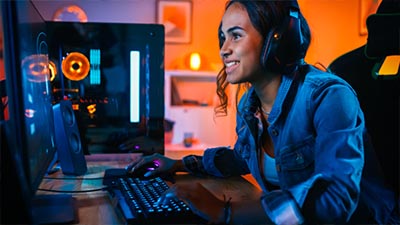The transition to digital and blended learning is ramping up at schools across the United States. Indeed, the number of states with guidelines and policies supporting a digital curriculum increases every year. For example, 29 states now offer a definition for digital instructional materials, while 15 states provide dedicated funding for digital instructional materials. In addition, 6 states require the implementation of digital instructional materials. 
The impact of digital learning
As the results of a recent Schoology survey confirm, digital learning has positively impacted both student achievement and teaching effectiveness. This is precisely why access to high-speed broadband in K-12 education is no longer considered a tertiary afterthought, but rather, widely understood to be a requirement. Similarly, fast and reliable wireless coverage is critical to support the increasing demands of new bandwidth-hungry devices such as the Lenovo Virtual Reality Classroom. The turnkey kit is ready to unbox and allows instructors to start teaching right away. A preconfigured Wi-Fi access point (AP) connects a touchscreen tablet preloaded with a lesson plan and teacher guides to the VR headsets – which are also preloaded with thousands of hours of digital content. Everything fits in or sits atop of a mobile charging cart. Unlike other devices, the challenges of supporting streaming video to VR headsets are many. A full classroom of connected devices requires high capacity; HD video needs 2-3Mbps depending on device capability; immersive video demands low latency and jitter to prevent glitches or stalls which interrupt the experience; a user’s head blocks the direct RF signal from access point to headset; and orientation of the headset shifts from horizontal to vertical polarities as students move their heads during an immersive experience. All of these conditions create challenges to legacy networks to keep up, requiring a way to redefine connectivity to suit the trend of AR and VR for immersive learning.
Virtual Reality bridges the digital divide
As the Department of Education (DoE) emphasizes, the digital divide cannot truly be bridged until all students understand how to use technology as a tool to engage in creative, productive and life-long learning – rather than simply consuming passive content. Fortunately, VR and AR are contributing to digital equity by enabling easy content creation for students of all ages. As an example, Lenovo recently introduced its Mirage (VR180) Camera with Daydream to simplify the creation of VR content with easy video and image capture. In addition, the VR camera allows teachers or students to upload to Google Photos and YouTube, where students can experience and share their own captured content on their headsets. Similarly, zSpace combines elements of AR and VR to create a lifelike experience with three-dimensional glasses and a stylus. zSpace also allows students to conduct experiments; create simulations; build elements by adding protons, neutron, and electrons; develop interactive applications; as well as design digital objects for 3D printing. Funded by the European Union Commission, Stories of Tomorrow is another example of how technology is helping to create new collaborative digital learning platforms. More specifically, Stories of Tomorrow is slated to utilize an advanced UI, learning analytics, visualization dashboards, and AR/VR to build an immersive platform that allows students to cooperatively develop and publish stories about space exploration. While AR and VR may initially seem like a challenging proposition for some educational institutions, Maya Georgieva, the director of digital learning at The New School and co-founder of Digital Bodies, sees Moore’s law driving technology capabilities up and prices down, thereby improving the fidelity, interactivity, and affordability of mixed reality teaching experiences. “Mixed reality is about breaking the boundaries between our physical and virtual worlds,” she explains. “It will offer us a canvas to imagine new modes of learning and new ways to collaborate with others beyond the frame of the screen.”
















